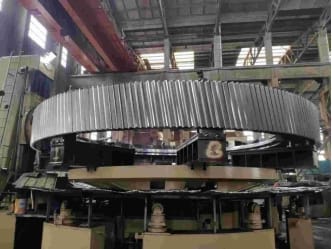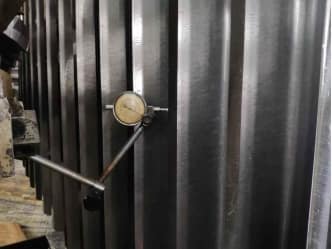Gear Run Out Measurement
Gear run out measurement is an important method used to evaluate the precision of gear manufacturing. The main purpose is to measure the radial run out and end run out of the gear to ensure the roundness and motion accuracy of the gear. Common methods for measuring gear run out are:

Gear run out instrument. This method uses a gear run out instrument, a tool specifically designed to measure the integrateness of gear elements, which measures the radial run out of the gear ring, that is, the maximum run out of the probe when it is in double-sided contact with the tooth height in the groove or on the gear within a revolution of the gear.
Height gauge method of measurement. The gear is installed in the gauge, the coaxiality is maintained, the height gauge is used to measure the different positions of the tooth tip, and the run out value is recorded.
Oscilloscope method. The radial run out of gear circle can be measured by detecting the change of the position of gear tip. The oscilloscope method has a wide measuring range and high precision, but the operation is relatively complicated.
Reference circle method. The radial run out measured when the reference circle is in contact with the gear tooth surface is adopted.

Laser measurement. Using laser probe to scan gear surface and calculate radial run out, this method is fast, easy to operate, but high cost.
In addition, gear run out measurement also involves the use of a variety of measuring heads and levers, such as cone measuring heads, horizontal levers, etc., suitable for different gear types and measurement requirements.
Learn more our project quality managemet, QAQC and third party inspection (TPI), NDT practices thru below link.
